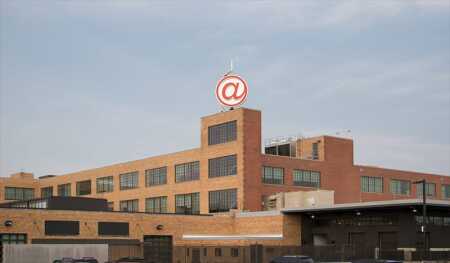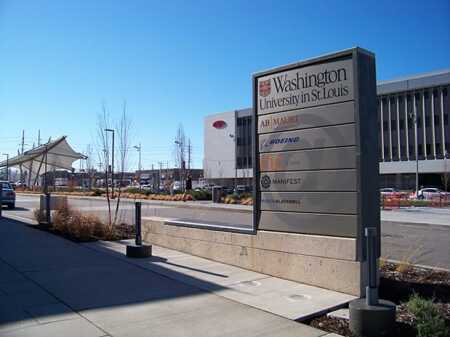Over the past decade, innovation districts have been popping up around the globe, from Barcelona to Seattle. Although there is no “cookie cutter” formula to these technology-centric developments, they do have some elements in common. One of the key traits is that they are anchored by a major institution such as a university, hospital, corporation, or research facility. There also is a shared goal of bringing together a mix of uses such as office and research-and-development space, housing, retail, and transit all within a dense urban setting.
However, these districts are more than just buildings and real estate. The underlying purpose is to create a center that fosters innovation—new ideas, new products, and new technologies. “What all of these innovation centers do is create opportunities for people to cross-pollinate,” says Dennis Lower, president and CEO of Cortex Innovation Community in St. Louis. Innovation districts bring people together in an environment that helps accelerate the growth of new companies and the launch of new products, he adds.
Founded in 2002, the Cortex Innovation Community is home to a 200-acre (81 ha) innovation and technology district integrated into St. Louis’s historic Central West End and Forest Park Southeast residential neighborhoods. It is emerging as a premier innovation hub of bioscience and technology research, development, and commercialization. The district is a joint effort of Washington University in St. Louis, BJC Healthcare, the University of Missouri at St. Louis, St. Louis University, and the Missouri Botanical Garden.
To date, Cortex has invested $500 million in buildings and infrastructure. When fully implemented, the Cortex master plan projects $2.1 billion of construction, more than 4.5 million square feet (418,000 sq m) of mixed-use development, including research, office, clinical, residential, hotel, and retail, as well as a new MetroLink light-rail station that is set to open at the end of 2017.
The goal of the Corvex master plan was to create an environment that was “live, work, play, learn” and not just a business park composed of commercial buildings, says Lower. “Everything that we do is to foster and promote a creative and innovative environment. Yes, buildings are part of it. But, the programming is what really drives it,” he says. For example, Cortex includes Cortex Commons, a 3.5-acre (1.4 ha) park, as well as a Venture Café that hosts a variety of networking events and workshops.
Over the past decade, a number of innovative districts have taken root, with examples such as Duke’s Clinical Research Institute in downtown Durham, North Carolina, and the new Cornell Tech campus currently underway on Roosevelt Island in New York City. These districts are being driven in part by a confluence of demographic and economic forces that are shifting the development focus back to core cities. “I think this is very much a part of a bigger movement,” says Bruce J. Katz, a vice president at the Brookings Institution and founding director of the Brookings Metropolitan Policy Program. High-quality places are being valued at much higher levels—by the market, by companies, and by individuals. This is just the physical manifestation of it, he says.
Another driver behind these districts is that the nature of innovation has changed, adds Katz. “You don’t see companies that have isolated corporate campuses where the only innovation that is happening is within their walls,” he says. Big global companies are working with networks of individuals and researchers in urban-style campuses and neighborhoods, and they have a greater desire to locate near major institutions such as Carnegie Mellon or Georgia Tech or MIT. “There is this proximity affect that is very pronounced in the aftermath of the recession,” says Katz.
In the Twin Cities, ULI Minnesota is helping lay the groundwork for what is envisioned to be a roughly 370-acre (150 ha) innovation district directly adjacent to the University of Minnesota at the border between the sister cities of Minneapolis and St. Paul. The vision for the project is to leverage the university and the robust transportation infrastructure in the area to create a very dense district where people can live, work, play, and learn.
“This is a pretty barren area in the middle of a very vibrant area,” says Caren Dewar, executive director of ULI Minnesota. Yet it offers a prime location next to the university and greater connectivity because of the recent expansion of the Green Line of the metro’s light-rail transit line that now runs directly through the district. Developers recognized the potential for growth and were lining up new projects. “Rather than having a series of one-off projects, we realized that we really needed to move forward with a synergistic and integrated approach; otherwise, we would miss the impact that this could ultimately provide,” says Dewar.
ULI Minnesota was brought into the project in the spring of 2014 to facilitate the formation of a public/private partnership, which to date includes more than two dozen different stakeholders ranging from local developers and utility companies to numerous public entities such as the University of Minnesota Foundation and the Minneapolis Public Housing Authority, among others.
The initial focus will be putting infrastructure in place, including making improvements to the street grids and adding greenway space, among other changes. Ultimately, the Minneapolis project will likely involve a 20-year effort that will continue to evolve over time. The focus of this is to get the “bones” or underlying support structure right to start, which is why the grid is so important, notes Dewar. Developers are now designing projects that are connected to each other in ways that wouldn’t happen if this partnership did not exist, and also designing according to the guidelines that were established, she adds.
Innovation districts have the potential to have a significant economic impact on a community. However, they are still part of a community’s bigger picture. “The idea is not to suck everything into one location, but to create a point of presence that spins companies out and connects to other nodes of innovation within the city,” says Lower. So, potentially, one city could have multiple innovation hubs in the future that might focus on different industry clusters.
At the same time, innovation districts are not going to fit into every city. “I do believe that urban innovation districts are a way to catalyze and focus entrepreneurial energy within cities,” says Lower. “But, you have to really understand the assets a city has and what doesn’t a city have.”







